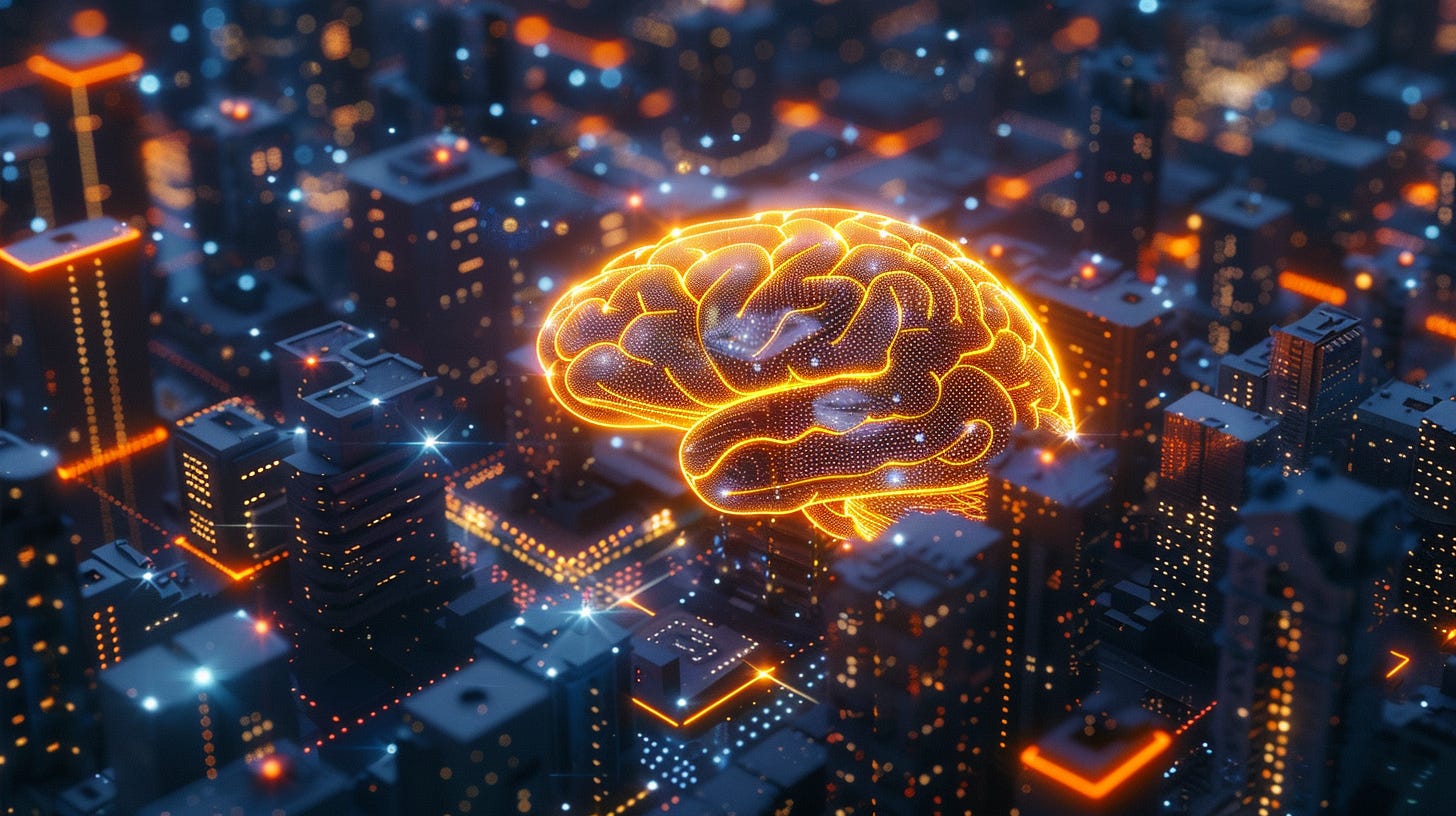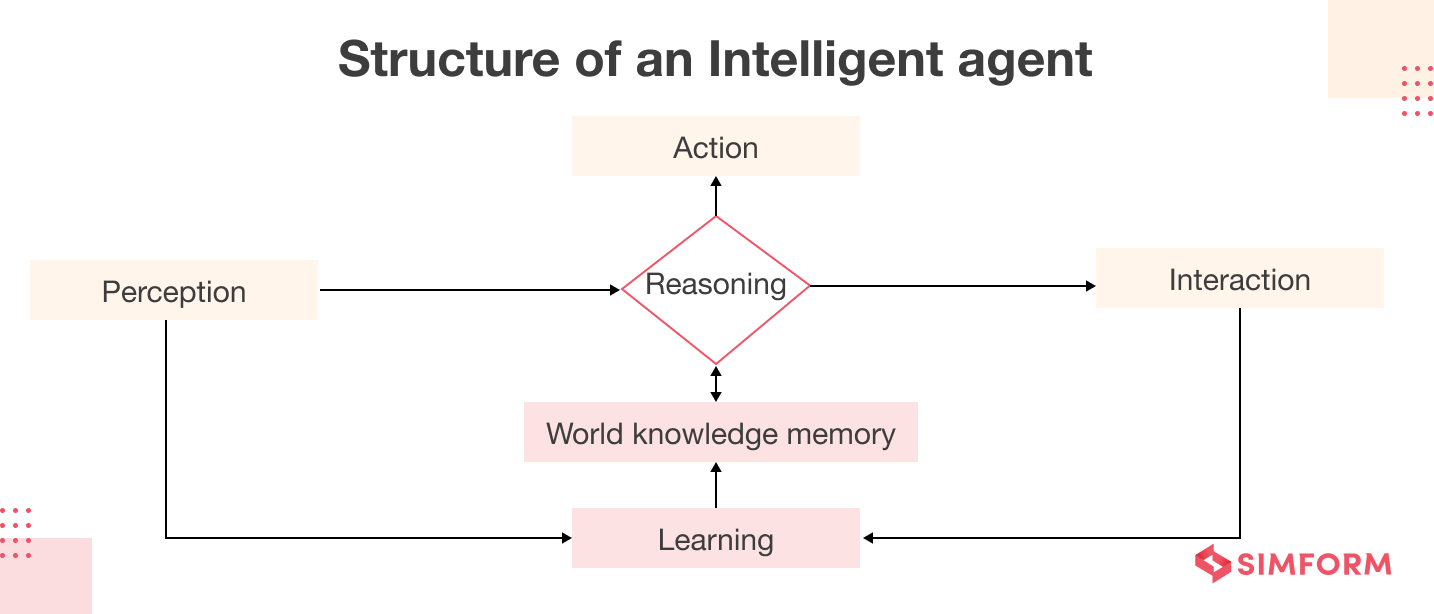Designing and Implementing AI Agents in Your Enterprise
AI agents have the potential to impact virtually every aspect of enterprise operations.
The business world is witnessing a paradigm shift as AI agents emerge as powerful tools for enhancing productivity, decision-making, and customer experiences. These intelligent software entities are changing how enterprises operate, offering unprecedented capabilities to automate complex tasks, analyze vast amounts of data, and provide valuable insights. As AI technology continues to advance, understanding and implementing AI agents has become crucial for businesses looking to stay competitive in an increasingly digital landscape.
As we’ve seen in my previous post, AI agents have the potential to impact virtually every aspect of enterprise operations. From streamlining customer service with intelligent chatbots to optimizing supply chain management through predictive analytics, these versatile tools are driving efficiency and innovation across industries. Their ability to learn, adapt, and make decisions autonomously opens up new possibilities for businesses to tackle complex challenges and uncover hidden opportunities.
However, to harness the full potential of AI agents, it's essential for enterprises to understand the various types of agents available and how to implement them effectively. This knowledge enables organizations to select the right agents for specific use cases, design robust architectures, and integrate these intelligent systems seamlessly into existing workflows.
Key Characteristics of AI Agents
Autonomy: AI agents can operate independently, making decisions and taking actions without constant human oversight.
Reactivity: They can perceive and respond to changes in their environment in real-time.
Proactivity: AI agents can take initiative and pursue goals.
Social ability: They can interact with users, other agents, and systems to exchange information and coordinate actions.
Adaptability: Advanced AI agents can learn from experiences and improve their performance over time.
How AI Agents Differ from Traditional Software
While traditional software follows predetermined rules and workflows, AI agents offer a more flexible and intelligent approach:
Decision-making: AI agents can make complex decisions based on data analysis and learned patterns, unlike rule-based software.
Adaptability: They can adjust their behavior based on new information or changing conditions without requiring manual reprogramming.
Learning capability: Advanced AI agents can improve their performance through experience and feedback.
Natural language interaction: Many AI agents can communicate with users in natural language, providing a more intuitive interface.
Core Components of AI Agent Architectures
Understanding the core components of AI agent architectures is crucial for effective implementation in enterprise settings. These components work in concert to create intelligent, adaptive systems capable of addressing complex business challenges.
Perception and data processing form the foundation of an AI agent's ability to interact with its environment. This component involves collecting data from various sources, such as sensors, databases, or user inputs, and transforming it into a format the agent can understand and act upon. In enterprise contexts, this might include processing customer data, market trends, or operational metrics.
Knowledge representation is how the agent organizes and stores information about its domain. This could be structured as ontologies, semantic networks, or rule-based systems. For example, a customer service AI agent might represent knowledge about product features, common issues, and resolution strategies in a way that allows for quick retrieval and application.
Reasoning and decision-making mechanisms enable the agent to draw conclusions and choose actions based on its knowledge and current inputs. This might involve logical inference, probabilistic reasoning, or planning algorithms. An AI agent in supply chain management, for instance, would use these mechanisms to optimize inventory levels or routing decisions.
Learning and adaptation capabilities allow agents to improve their performance over time. This could involve supervised learning from labeled data, reinforcement learning through trial and error, or unsupervised learning to discover patterns. These capabilities are particularly valuable in dynamic business environments where conditions frequently change.
Communication and interaction interfaces are essential for AI agents to engage with users and other systems. This includes natural language processing for human-like interactions, APIs for system integration, and user interfaces for seamless human-computer interaction. In enterprise settings, these interfaces ensure that AI agents can effectively collaborate with employees and integrate into existing workflows.
Designing AI Agents for Your Enterprise
The design process for AI agents in enterprise settings requires careful consideration of business needs, technical capabilities, and ethical implications.
Identifying suitable use cases is the first step in designing AI agents. Look for areas where automation can significantly improve efficiency, decision-making can benefit from data-driven insights, or customer experiences can be enhanced. For example, a financial institution might identify fraud detection as a high-value use case for AI agents.
Selecting appropriate agent types depends on the complexity of the task and the desired level of autonomy. Simple reflex agents might suffice for straightforward, rule-based tasks, while more complex scenarios might call for goal-based or learning agents. The fraud detection use case, for instance, would likely benefit from a learning agent capable of adapting to new fraud patterns.
Defining agent goals and constraints is crucial for aligning AI capabilities with business objectives. This involves setting clear performance metrics, establishing ethical guidelines, and considering regulatory requirements. For a customer service AI agent, goals might include reducing response times and improving customer satisfaction, with constraints around data privacy and escalation protocols.
Architecting the agent's knowledge base involves deciding how to structure and store the information the agent needs to function effectively. This might include domain-specific knowledge, historical data, and learned patterns. The choice of data repository structure is crucial. For complex relationships and hierarchies, graph databases like Neo4j are ideal. NoSQL databases such as MongoDB suit document-oriented or semi-structured data. Traditional SQL databases like PostgreSQL or MySQL work well for highly structured data, ensuring robust querying and data integrity. For real-time data processing, time-series databases like InfluxDB are optimized for handling sequential data. The knowledge base should be designed for efficient querying and easy updates as new information becomes available.
Designing the decision-making process is about determining how the agent will use its knowledge and inputs to make choices. This could involve rule-based systems, machine-learning models, or a combination of approaches. The design should consider factors like interpretability, speed, and the ability to handle uncertainty.
Training AI Agents on Company Data: Essential Sources
To maximize the effectiveness of AI agents in your enterprise, it's crucial to leverage a diverse range of internal data sources. This approach ensures that your agents have a comprehensive understanding of your business operations, customer interactions, and market dynamics.
Here are some key types of company data to consider for training your AI agents:
Customer Relationship Management (CRM) Data: This rich source of information includes customer profiles, interaction histories, and purchase records. It's invaluable for training agents in customer service, sales forecasting, and personalized marketing.
Enterprise Resource Planning (ERP) Data: ERP systems contain vital information on inventory, supply chain, and financial transactions. This data is crucial for agents involved in operations management and financial analysis.
Human Resources Information: Employee data, performance metrics, and skills inventories can be used to train agents for talent management, workforce planning, and internal process optimization.
Product and Service Information: Detailed product specifications, service catalogs, and pricing data are essential for agents handling product recommendations or technical support.
Marketing Campaign Data: Historical campaign performance, customer segmentation, and engagement metrics can inform agents designed for marketing optimization and customer targeting.
Website and App Analytics: User behavior data, click-through rates, and conversion metrics are valuable for training agents in user experience optimization and digital strategy.
Internal Communications: Email threads, chat logs, and meeting minutes can help agents understand company culture, decision-making processes, and internal knowledge sharing.
Customer Feedback and Reviews: This unstructured data is crucial for sentiment analysis and product improvement recommendations.
Operational Logs: Data from IT systems, manufacturing processes, or logistics operations can train agents for predictive maintenance and process optimization.
Financial Records: Historical financial data, budgets, and forecasts are essential for agents involved in financial planning and risk assessment.
By leveraging these diverse data sources, you can create AI agents that have a holistic view of your business, enabling them to make more informed decisions and provide more valuable insights.
AI Agents: A Strategic Imperative
The integration of AI agents into enterprise environments represents a transformative shift in business operations, offering unprecedented opportunities for efficiency, innovation, and value creation. By understanding AI agent architectures, implementing thoughtful strategies, and addressing key challenges, businesses can harness this technology's full potential.
As AI agents continue to evolve, with advancements in learning capabilities, collaboration, and integration with emerging technologies, success will hinge on a holistic approach that aligns AI capabilities with business objectives while considering ethical implications. Organizations that view AI agents as collaborative partners, rather than mere tools, will be best positioned to thrive in this new era, gaining significant competitive advantages and driving innovation across their operations.
Keep a lookout for the next edition of AI Uncovered, where we will explore AI agent platforms and tools. This series will also explore Agentic Workflows, Agent Engineering, and more.
Follow on Twitter, LinkedIn, and Instagram for more AI-related content!





